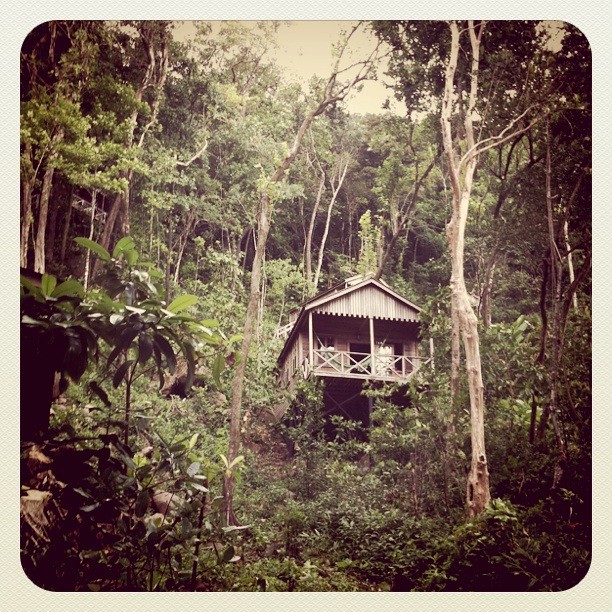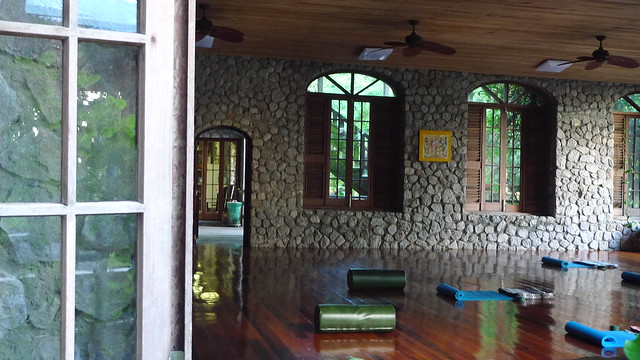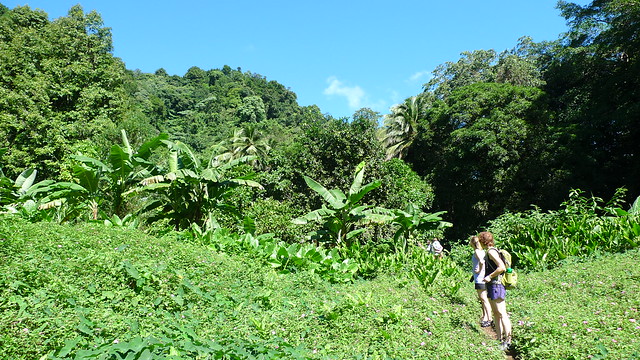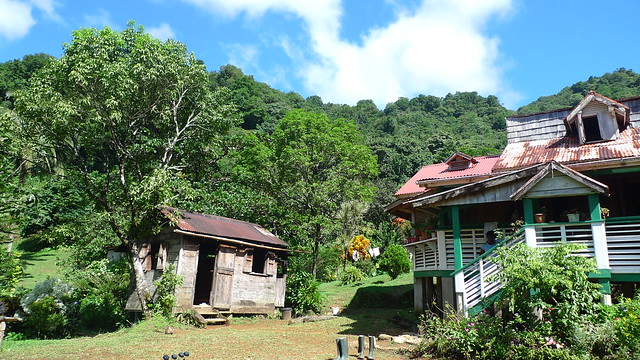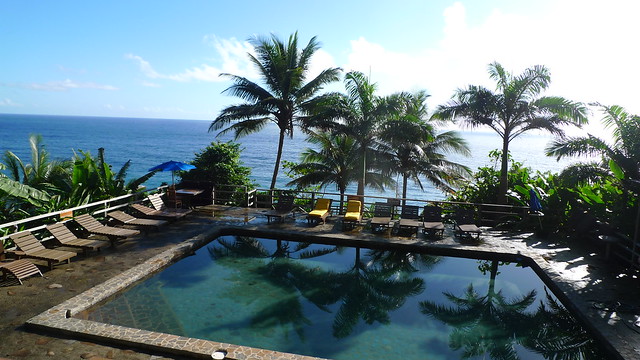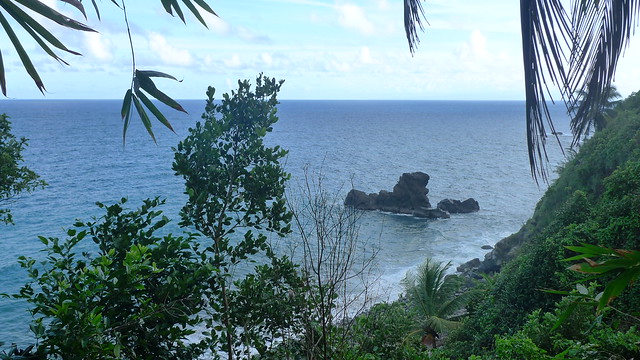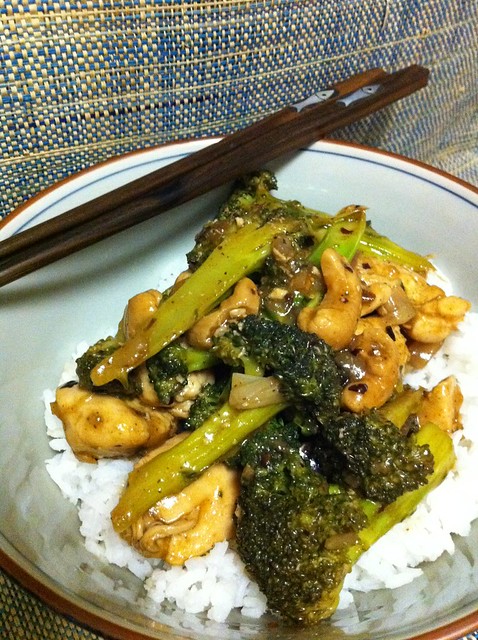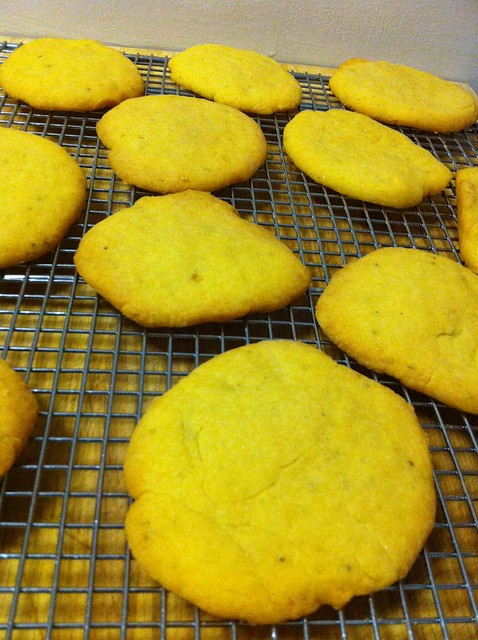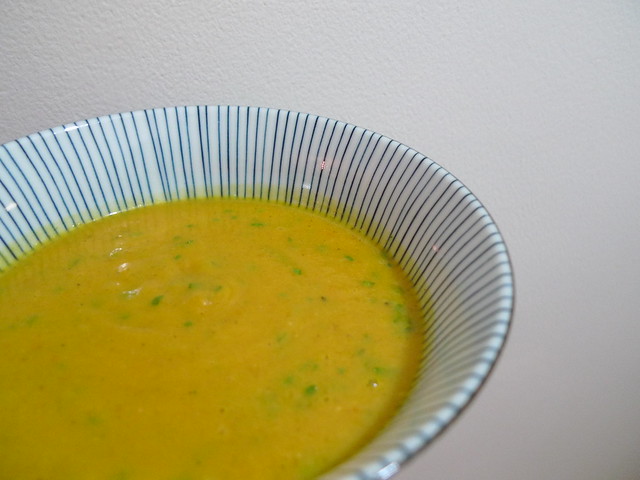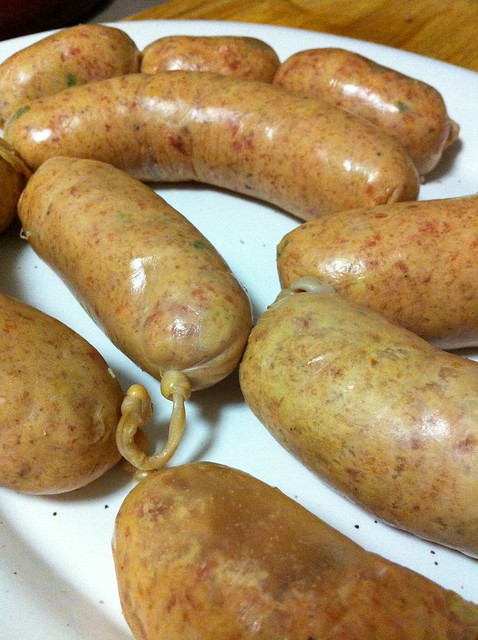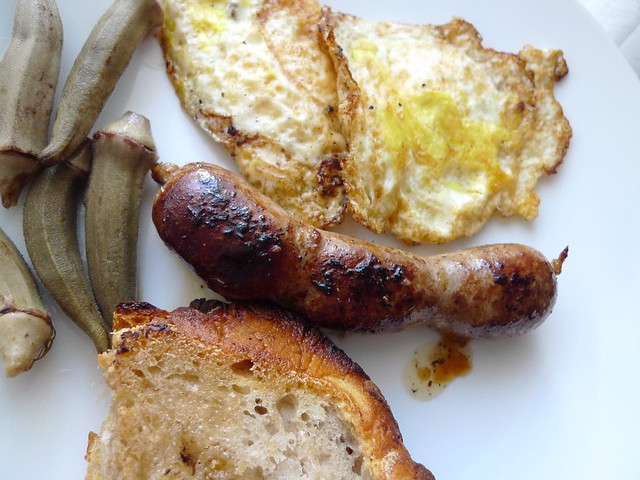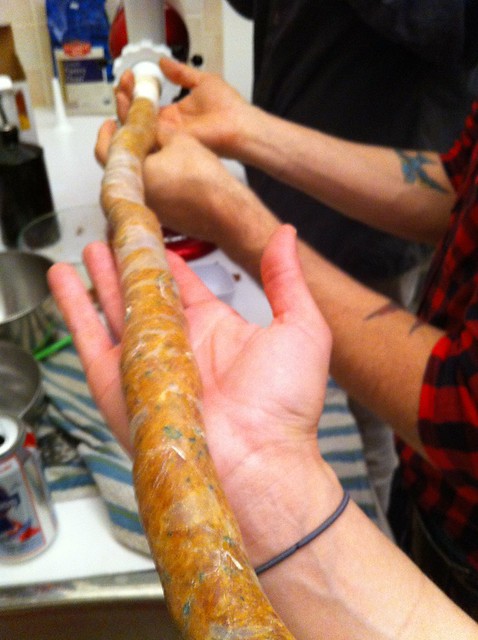It’s okay, Keith the driver said. The rain will stop after we pass the forest.
And it did.
One thing I learned during my stay in Dominica was that the weather was never what it seemed. I had a view of the Atlantic Ocean from my cottage and more than a few times I watched the rain approach like a marching band, only to abruptly stop as soon as the deluge started.
Keith met and picked me up from the tiny airport of Melville. I watched my backpack get transferred from our small plane to the conveyor belt next to boxes of clucking yellow chicks. There was a faint warm breeze and a super bright moon in the sky before the weather turned into rain as we drove along the rain forest. Past the greenery, it was again dry and I sat back to watch Keith negotiate Dominica’s unlit curvy roads.
After two Times magazines, an old Sunday paper, several CD compilations from my iPhone, an entire This American Life episode and a couple hours’ worth of uncomfortable naps on airport plastic chairs, I finally made it to Jungle Bay Resort and Spa in the tiny island of Dominica. What should have been a short trip from New York to the Caribbean added up to 20 hours of travel time after including waking up at an ungodly hour to get to Newark airport, waiting for five boring hours for my connecting flight in Saint Martin and driving another two hours to the cottages. I gave myself credit for packing yogurt and leftover roast pork tenderloin and Brussels sprouts from home because rum and fast food pizza from the SXM airport wouldn’t have sustained me.
When friends found out I was going away for my birthday and the holidays, they all thought I was going to the Dominican Republic. I had to correct them and tell them that Dominica, pronounced like the name Dominic plus the A, is between the islands of Guadeloupe and Martinique. Surprisingly, not a lot of people have heard of the country even though I ended up meeting and hanging out with all the guests from the New York area.
The dark roads reminded me of Tanzania where I saw people on the side of the road only when illuminated by our headlights. The driving reminded me of how Filipino drivers would halt to a stop when they see another car coming head-on; a honk of acknowledgement always occurred. Keith had shown me the restaurant menu as I drank my cold passionfruit welcome drink in the car. I ordered my first dinner ahead of time before the kitchen closed for the night. After two hours of driving, I was finally shown my cottage where I ate my first meal of callalloo soup, a watercress and cucumber salad and pan-seared tuna. I freshened up using the outdoor-style shower attached to my room and drifted off to sleep with the sound of the ocean crashing against Stony Beach right below me. Somewhere out there was a historic lunar eclipse, but alas, rain started pouring again as soon as I was comfortable enough on the king-sized bed covered by a mosquito net canopy.
My internal clock woke me up a few minutes ahead of the front desk’s wake-up call. I got ready for yoga and met Nancy in the open yoga room with five other early risers. Nancy was the one who made arrangements for my stay at Jungle Bay. She made me feel comfortable booking a solo trip via e-mail and assured me that I will have all the alone time I needed without being lonely. (She being from Switzerland who ended up staying to work at Jungle Bay.) I later learned that Dominica is one of the safest places in the Caribbean for female solo travelers.
Yoga, thankfully, was for beginners. It had been a while since I’ve done yoga so it was great not to be struggling; I suppose a few classes of Pilates at my gym have helped me too. After a quiet start to my morning, I climbed back 200 steps to my room, showered again and laced up my hiking boots. After a quick breakfast at the resort’s Pavillion Restaurant, I joined two other families and Sam Raphael, the owner, plus his two children, Ade and Jai–both New York based as well–on a hike through Perdu Temps with another staff member named Brother. (Occasionally, I asked him What’s up, bro? for fun.)
It was a beautiful day for a short hike. The trail retraces the steps of Dominica’s run-away slaves, through the forest and up the mountains to Pomme’s “paradise”. Pomme is a local guy who lives a couple of hours up the mountain and lives with his family off his surroundings. Everything they eat comes from the plants and the trees around the property. The water comes from a stream a few yards away. An outhouse is behind the trees, but all the waste goes back to the earth. If there’s such a thing as true organic living, Pomme is doing it.
We were mostly protected from direct sunlight by a canopy of trees. We had to cross three streams and I had to take my boots off at one of them because the water went as high as my thighs. Rain is generous in these parts and so moss-covered rocks made downhill trekking very tricky. Brother stopped and picked fresh oranges and grapefruits from trees. He carved a cinnamon tree bark to show us where the spice comes from. He picked and gave me a fresh nutmeg. We saw a lot of dashin, plants that look like taro and one of the staples of the Dominican diet. Banana and mango trees were everywhere, as well as avocado and mangosteen. I was also surprised to see tall bamboo trees swaying with the wind as I’ve never seen them before anywhere else in Central America or the Caribbean. Whenever we walked an open valley, I would look up and see the green-covered mountains ahead of me. The lushness reminded me so much of Kauai in Hawaii, and at times, I thought of the movie Avatar.
Pomme’s wife and daughter cooked up mashed pumpkin and bake (like johnnycakes, but whole wheat) and they roasted breadnuts–nuts that look like smaller chestnuts–on an open fire. While the rest of our group joined Pomme on a short tour of his gardens, I walked down the stream with Ade to refill my water bottle with fresh spring water. Dominica is the thirtieth country I’ve visited in the last ten years and only in Patagonia was water so fresh that you could drink off the streams and rivers. I loved that I didn’t have to worry about running out of water during our hikes. This country is truly blessed by Mother Nature.
We were back at Jungle Bay a little before 3pm. I showered and changed for the night. This time, I knew well enough to pack what I needed for the rest of the night to avoid the walk back up to my room until I had to go to sleep. I sat by the pool where I ended up napping even with the youngest guests squealing in the water. All that sun did get to me somehow. When I woke up, I walked down to the ocean cabana to watch the water crash against the rocks. I only left when small palm fruits started to fall from the trees above my hammock because of the incoming strong wind.
It started to get dark at 6pm. I walked to the spa to claim my first massage of seven for the duration of my stay. The spa’s windows all opened up to the ocean so each treatment didn’t need background music. The warm breeze and the sound of the waves were enough to relax your entire body. The ladies who worked there are all properly trained. I noticed that every time they needed to add more massage oil to my body, one of their hands remained lightly on my back to let me know that they were still there. I haven’t received a proper massage since my Kilimanjaro hike six months ago, so I felt like Jell-O after the hour was over.
I managed to walk to the restaurant for dinner where I joined Sam’s family for dinner. I was famished and ate cod fritters, fish soup, and tuna–the restaurant only offered seafood and chicken in terms of meat and there were plenty of vegetarian options for the more healthier guests–plus freshly-made coconut and guava sorbets. (Believe it or not, I opted out of alcohol for the rest of the week until it was time to celebrate my birthday.) For the duration of my stay, Sam made me feel like I was part of his family: it was just expected that I sit with them to eat and stay after dinner to drink and talk. By the third day, it was standard for me to greet Joanne, the kitchen manager, with a hug and a squeeze. As the week progressed and new guests arrived, our table grew from four to six, and then to eight. By the time I had to fly back to New York City, all the tour guides and drivers had already given me hugs with the lifts.
What was this place where I was alone but not lonely? It was Dominica, and my vacation had just begun.
Related post/s:
Where to stay in Dominica: Jungle Bay Spa & Resort
Day 1 in Dominica photos on Flickr
A summary of Dominica photos using Instagram
